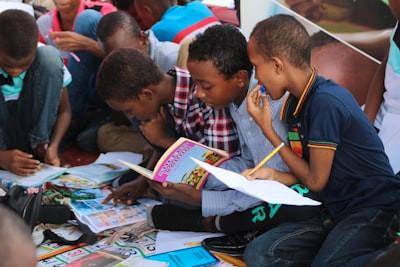What Homeschoolers Need To Know About Project-Based Learning
Curated from: performingineducation.com
Ideas, facts & insights covering these topics:
4 ideas
·16 reads
Explore the World's Best Ideas
Join today and uncover 100+ curated journeys from 50+ topics. Unlock access to our mobile app with extensive features.
Project-based learning (PBL)
PBL is a learning method where children work on a long-term project. They inquire in-depth into a specific topic or question and gain and apply real-world skills as a result.
PBL is not a standalone. It can be added to any curriculum or activity you are presently using. It allows for application and in-depth understanding of concepts in math, language arts, social studies, science, art, and business.
2
7 reads
Benefits of project based learning (PBL)
- PBL allows educators to sneak in the learning. Older children prefer this format over worksheets.
- The real-world format allows children to connect the work with day-to-day life. Doing a PBL where you plan a party can connect math skills with what your family is actually doing.
- PBL allows children to learn different skills without the struggle of direct instruction.
- PBL work for special needs children. You can give your child as much or as little help as you need to on the project.
2
1 read
The elements of PBL
- Meaningful content. At its core, the project is focused on teaching valuable knowledge and skills.
- 21st-century competencies. Children build expertise essential for today's world, such as problem-solving, critical thinking, collaboration, communication, and creativity/innovation.
- In-Depth inquiry. Children are engaged in a rigorous process of asking questions, using resources, and finding answers.
- Public Audience. Children present their work to people in their family or community.
2
2 reads
What children gain from PBL
- Need to Know. Children see the need to gain knowledge, understand concepts and apply skills to answer the driving question.
- Voice and Choice. Children are encouraged to make choices about the products to be created, how they work, how they use their time, and gain valuable experience.
- Critique and Revision. The project includes processes for kids to give and receive feedback on the quality, leading to revisions or further inquiry.
2
6 reads
IDEAS CURATED BY
Marita Green's ideas are part of this journey:
Learn more about parenting with this collection
Basic survival skills
How to prioritize needs in survival situations
How to adapt to extreme situations
Related collections
Similar ideas
12 ideas
Deschooling: What Is It and How to Deschool
kidskonnect.com
4 ideas
What is PBL?
pblworks.org
Read & Learn
20x Faster
without
deepstash
with
deepstash
with
deepstash
Personalized microlearning
—
100+ Learning Journeys
—
Access to 200,000+ ideas
—
Access to the mobile app
—
Unlimited idea saving
—
—
Unlimited history
—
—
Unlimited listening to ideas
—
—
Downloading & offline access
—
—
Supercharge your mind with one idea per day
Enter your email and spend 1 minute every day to learn something new.
I agree to receive email updates

